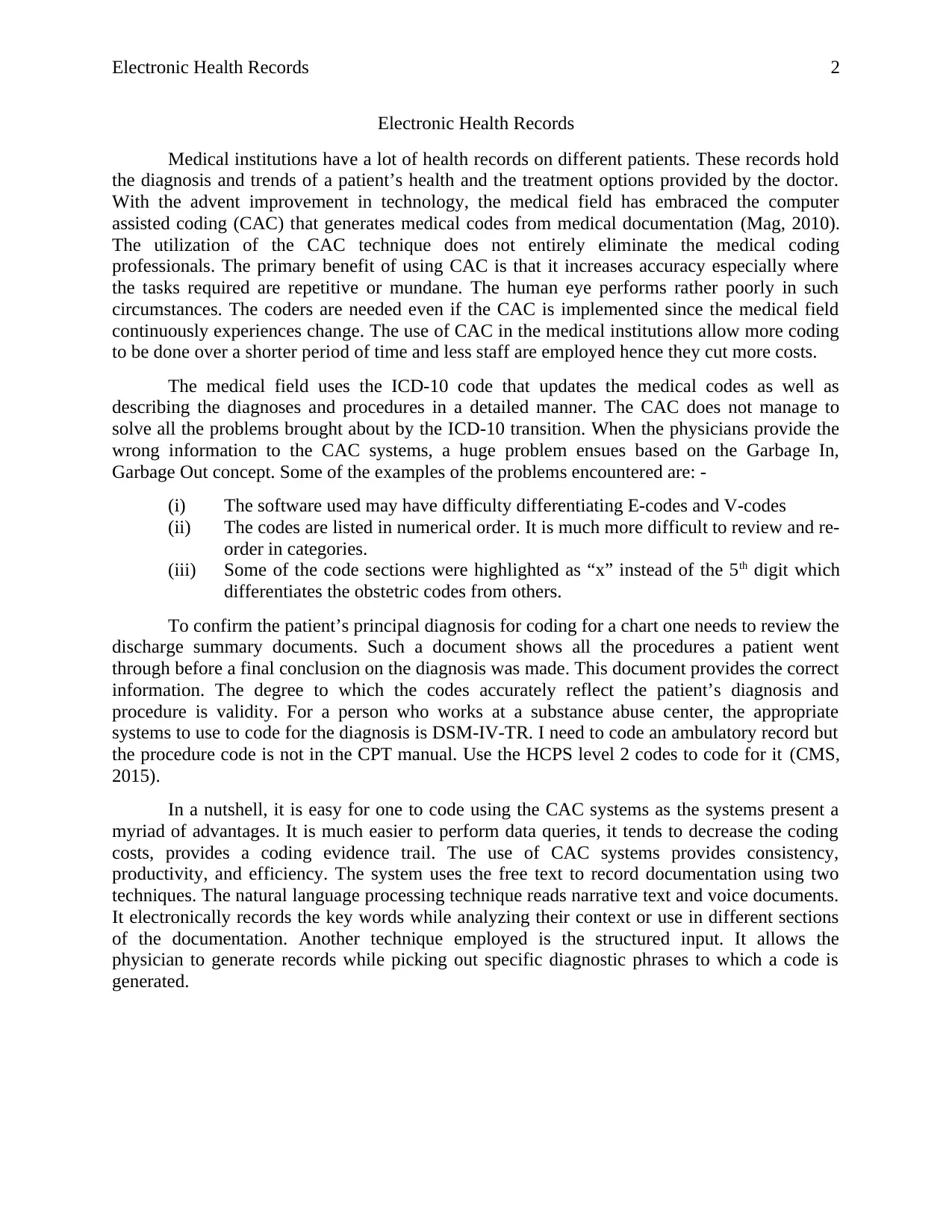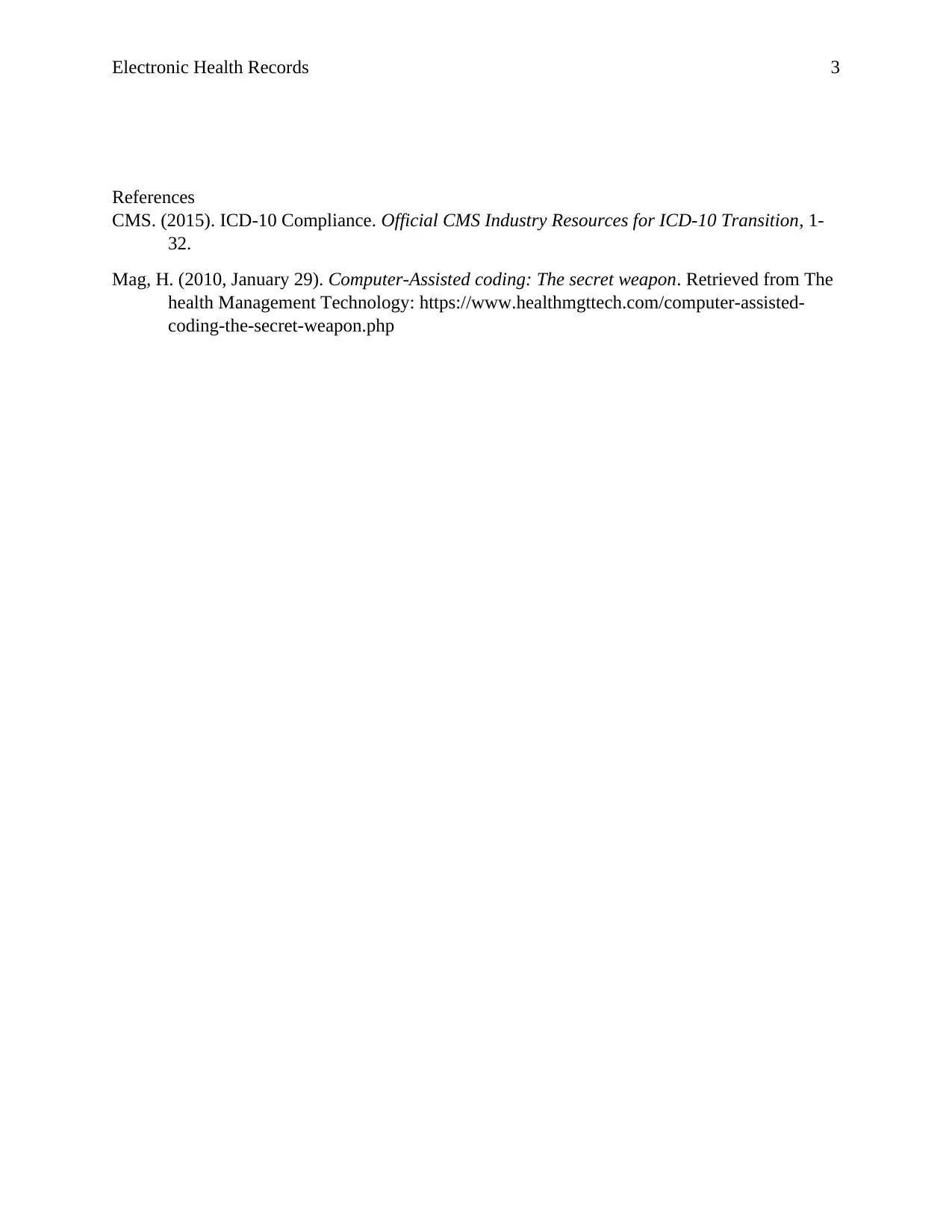Electronic Health Records Assignment: Coding, Systems, and Procedures
VerifiedAdded on 2020/03/04
|3
|620
|174
Homework Assignment
AI Summary
This assignment delves into the realm of Electronic Health Records (EHR), examining the processes and systems involved in medical coding. It focuses on the application of Computer-Assisted Coding (CAC) and its benefits, such as increased efficiency, accuracy, and cost reduction, while also acknowledging its limitations and potential issues like the 'Garbage In, Garbage Out' concept. The assignment highlights the importance of accurate coding using ICD-10 codes and discusses the use of DSM-IV-TR for substance abuse centers and CPT/HCPS codes for ambulatory records. It explores the techniques used by CAC systems, including natural language processing and structured input, and emphasizes the significance of proper documentation for accurate diagnosis and procedure coding. The assignment uses real-world examples to illustrate the coding process and the importance of correct code selection for various medical scenarios.
1 out of 3










![[object Object]](/_next/static/media/star-bottom.7253800d.svg)